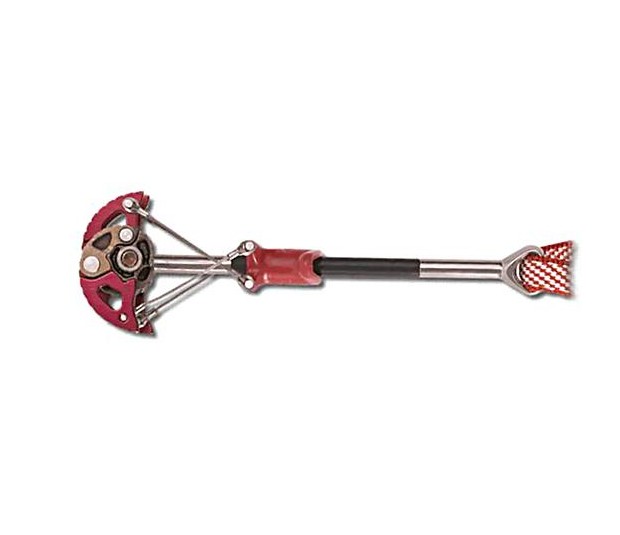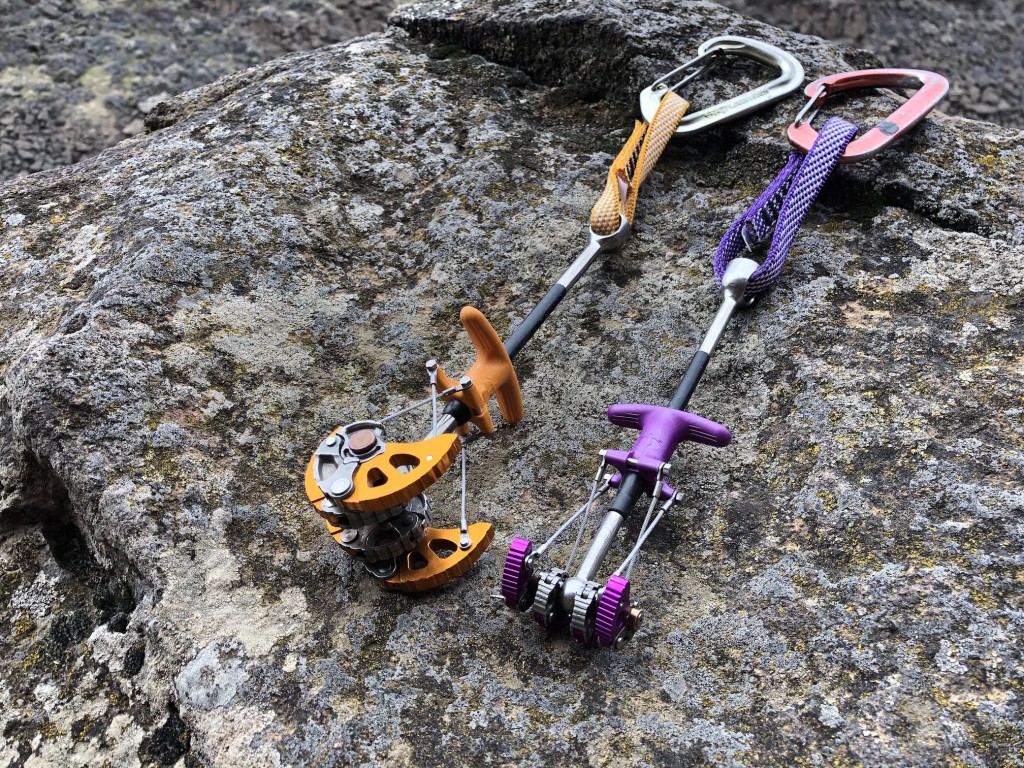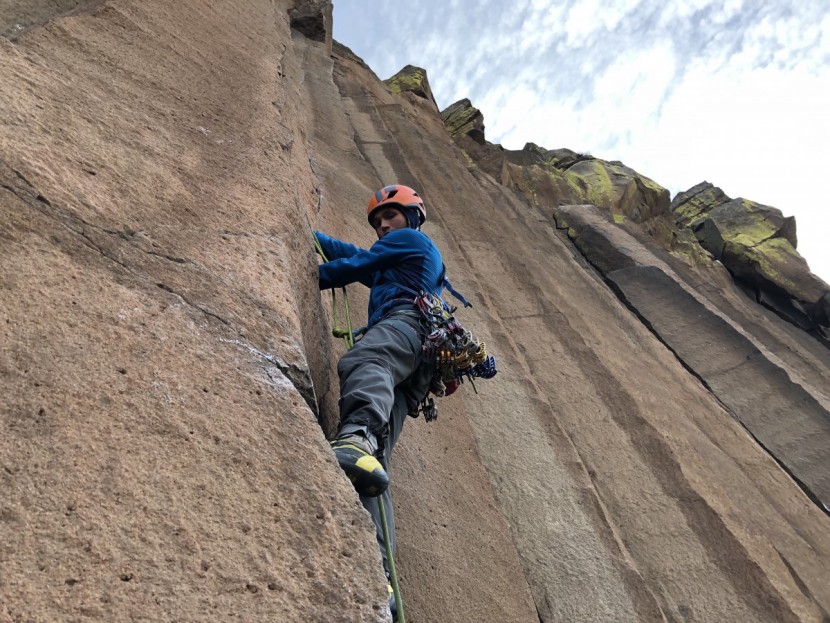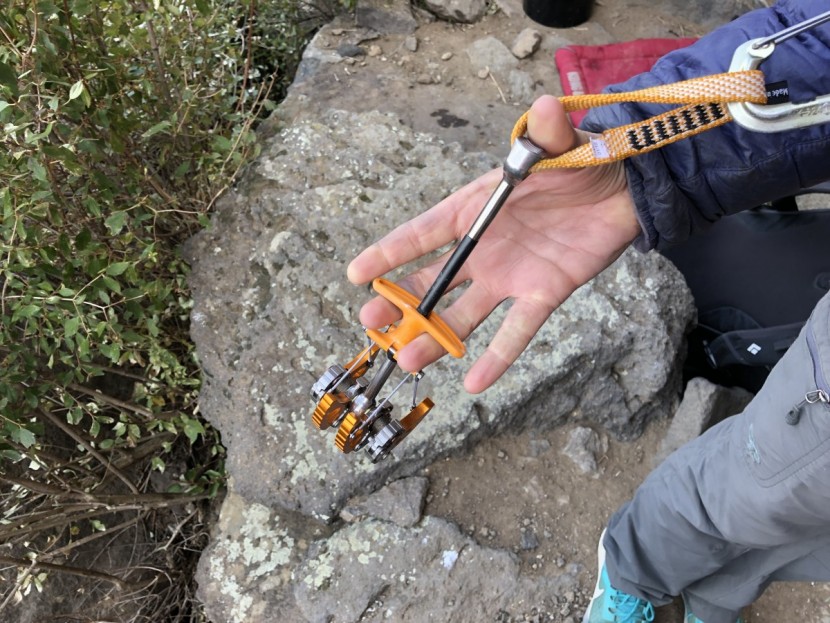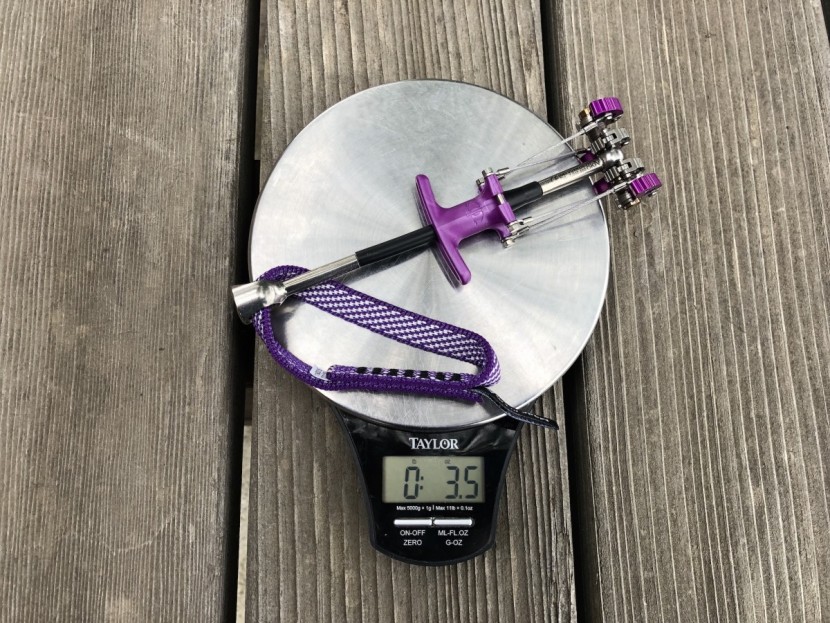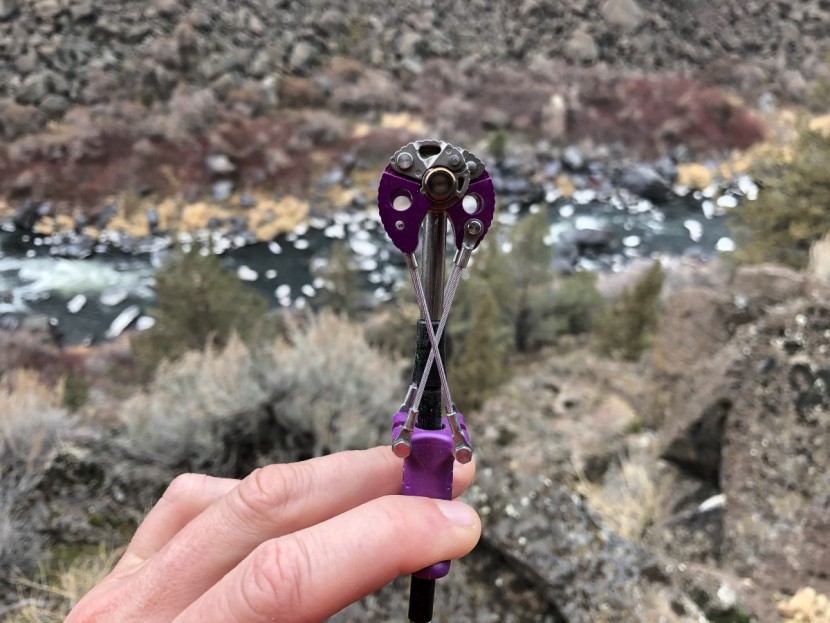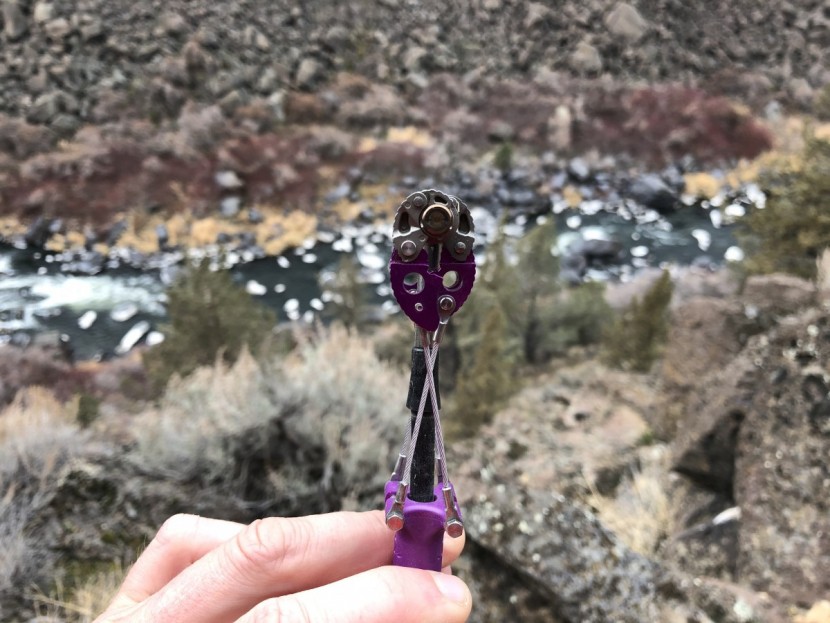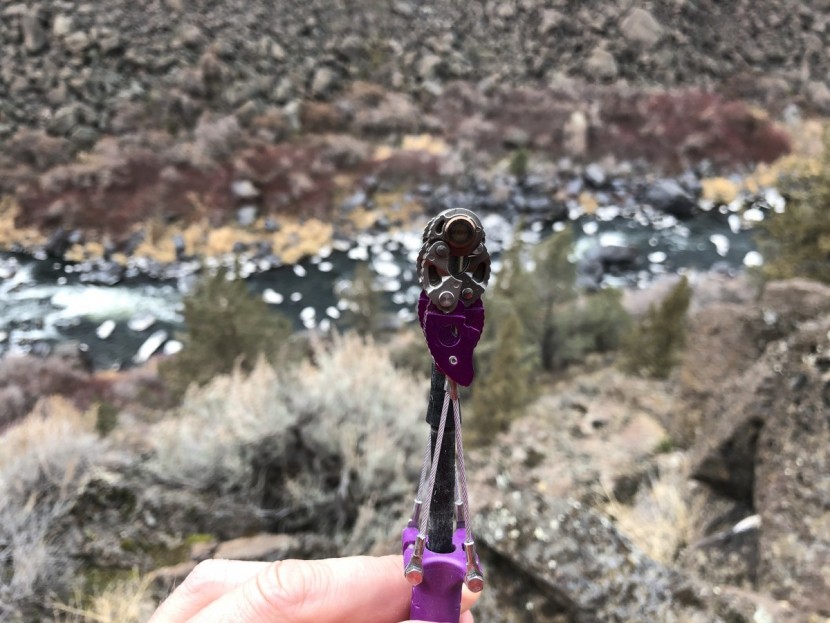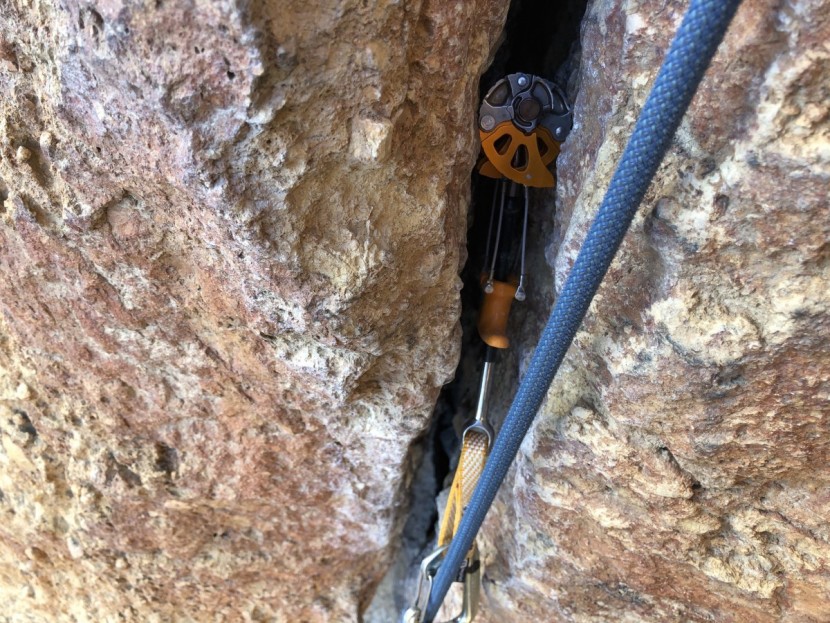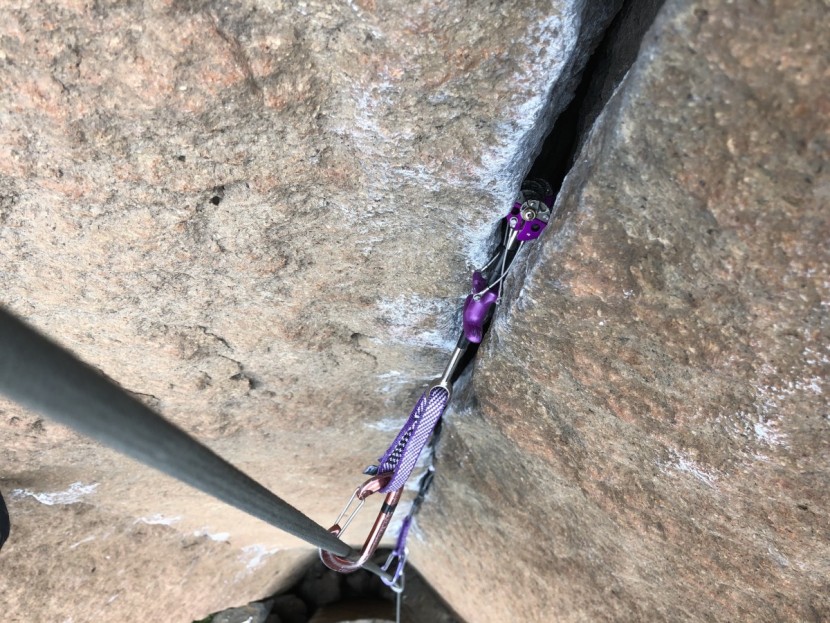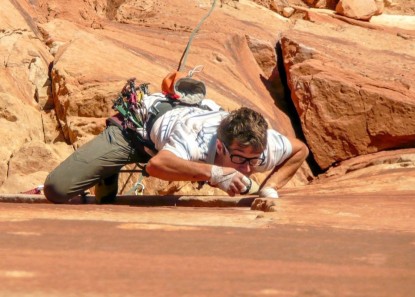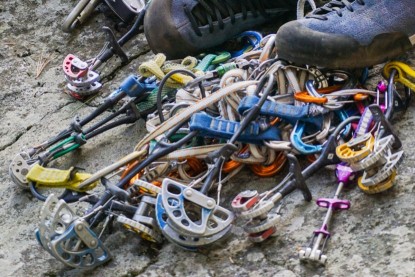Omega Pacific Link Cam Review

Our Verdict
Our Analysis and Test Results
Omega Pacific Link Cams are unique because each individual cam lobe is actually made of three pieces instead of one. These pieces are riveted together at a pivot point that allows the cam to contract, then contract even further, and then even further, when the trigger is pulled. As such, each cam not only serves to protect its primary range, but can also protect the entire range of the next cam down, meaning that each cam can function for two different sizes, instead of just one. A full set is made up of four cams, from purple .5 up to gold #2, following the same colors and sizing as Black Diamond Camalots.
The obvious advantages to these cams are size versatility — you can carry less cams while not compromising on the sizes that you can protect. However, they have heaps of downsides that ensure they remain a supplementary addition to a rack, rather than its foundation. The single biggest issue is their potential durability. Simply put, the rivets in each lobe present potential breakage points, and a lot of care is needed to avoid weighting or especially torqueing these rivets, or the cam can break. Other issues include their weight, propensity to walk and get stuck, rigid stem and necessity of directional pull, and lack of thumb loop, which will be discussed in more detail below.
Free Climbing
In the right situation, Link Cams can be advantageous weapons on a free climber's rack. We don't particularly like using them when climbing near our limits, but on easier routes, especially long multi-pitch, we like to carry one due to its increased versatility, and feel like we can often get by with one Link Cam where we might have needed two normal cams. In these situations we often use them as one of our last pieces on the pitch, or to build an anchor.
What we don't like about free climbing with them is that they must be placed in a way that the direction of pull is perfectly in line with the stem, which is rigid. If they are not oriented perfectly, a downward pull in the case of a fall places lateral forces on the cam lobes, potentially causing the rivets holding the lobes together to break. Simply put, these points are way weaker than a single molded cam lobe. Furthermore, you must visually inspect each placement to make sure that the contact point is not one of the joints between lobe pieces, but this can be hard if you are maxed out, or the cam is buried deep in a crack. Other limiting factors are the rigid stem, which is not great in horizontals, and a lack of thumb loop, which makes it harder to quickly grab correctly.
Weight
There is no arguing with the fact that Link Cams are heavy, but looking at their complex design, this should come as no surprise. They are very nearly the heaviest cams in this review, and this factor alone could be reason to opt not to use them. That said, a range of four can protect the same as five regular cams, and it could even be argued that a range of three cams could protect the same as five normal cams, so despite their heavy individual weights, the potential for weight savings is there when you consider range.
Range
The great advantage to these cams is their vastly increased range. It is possible to take a #2 Link Cam and contract it until it can be shoved into a crack that would normally fit a .75 sized piece, an impressive feat! However, like most cams, the more you contract it, the less play you have to contract the lobes for extraction, and the more likely it is to get stuck. Their great range does add to their versatility, though, and if you are almost out of gear at the end of a 200' pitch and need to place one more piece of gear before mantling to the anchor, a Link Cam is far more likely to fit whatever size you encounter than a similar sized regular cam.
Horizontal Cracks
Link Cams have a rigid stem that is made up of a piece of flexible metal cable sheathed with aluminum and plastic. The part sheathed in plastic is semi-flexible, but by and large these cams to don't do well when weighted horizontally.
Tight Placements
Generally speaking, these cams do not fit well into tight placements. Not only are they only made in the middle range of sizes, but their heads are quite wide, and the rigid stem doesn't do them any favors when fiddling a piece into a pod or pin scar. When you contract a Link Cam to its fullest extent the trisected lobes line up along the stem in a way that would preclude them from fitting into any other type of opening than a parallel sided crack.
Durability
These cams have a ton of moving parts, and many places where solid metal in a regular cam has been replaced by rivets that are clearly not as strong. Simply reading the warning language on Omega Pacific's website should clue you into the unique ways that force can damage these cams. While we haven't personally broken any of these cams, it's obvious that one fall when the lobes aren't perfectly positioned could result in too much stress being placed on these rivets. Not only does this mean that these cams are not guaranteed to hold as many falls as regular cams, but it also rattles our confidence a bit. Furthermore, due to the location of the trigger wires on the lowest of the three lobes, if rivet break, that lobe will become un-retractable, and you aren't likely to get the cam out of the crack.
Walking
Unfortunately, Link Cams are quite prone to walking when compared to other competitors, and have a reputation for easily getting stuck. The stem on these cams is extra long because their increased range requires a long trigger pull, but this long, rigid stem acts as a more powerful lever when pushed about by the rope, meaning a slight movement of the rope could translate into a greater distance of cam walking inside the crack. They do not come with an extendable sling.
If a Link Cam is contracted into its second or third range, there is a lot of metal now compressed into a small space. If the cam in this situation walks back into the crack, it is far more likely that these other lobes could hang up on undulations or protrusions in the rock, blocking the cam's easy removal. They also block you from easily seeing what is getting stuck in there, and from easily freeing a lobe with your nut tool.
Aid Climbing
Lacking a higher thumb loop clip-in point, or the ability to easily fit into tight and awkward placements, not to mention their durability concerns, we find there to be little practical application for these cams while aid climbing and don't recommend them for this purpose.
Value
Link Cams are expensive, with the smallest sizes retailing for a price normally associated with the largest of cams (cams tend to get more expensive as they grow in size). Considering their durability concerns, and genuinely limited application, we have a hard time recommending them based upon value.
Conclusion
Omega Pacific Link Cams have a niche place on some climber's racks, but despite their very unique and innovative design, simply have too many drawbacks to consider them a better option than their loads of competition. For those who remain interested, one or two of the larger sizes can be useful on appropriate multi-pitch adventures.


